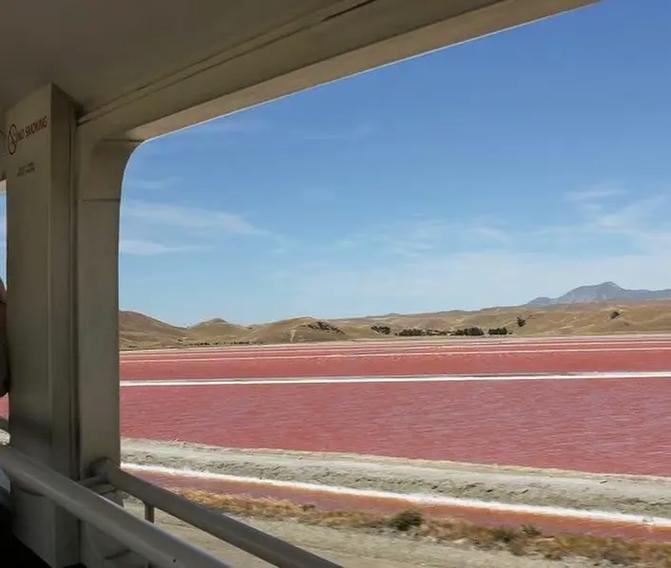Global Travel Information
Gibson Desert, Australia
The Gibson Desert: Australia’s Untamed Wilderness
Stretching across the vast interior of Western Australia, the Gibson Desert is one of the continent’s most remote and least explored regions. Covering approximately 156,000 square kilometers (60,000 square miles), this arid expanse is a land of extremes—scorching temperatures, shifting red sands, and a stark beauty that has remained largely untouched by human development. Named after Alfred Gibson, an early explorer who perished here in 1874, the desert is a testament to both the resilience of nature and the challenges faced by those who dare to traverse it.
Geography and Climate
The Gibson Desert lies between the Great Sandy Desert to the north and the Great Victoria Desert to the south. Unlike the towering dunes of the Sahara or the salt flats of the Atacama, its landscape is characterized by undulating sand plains, low rocky outcrops, and sparse vegetation. The desert’s reddish-brown sands are rich in iron oxide, giving the terrain its distinctive hue.
Temperatures in the Gibson Desert are extreme, with summer highs often exceeding 40°C (104°F) and winter nights dropping below freezing. Rainfall is scarce and unpredictable, averaging less than 200 millimeters (8 inches) annually. When rain does fall, it transforms the desert temporarily—wildflowers bloom, dormant seeds sprout, and ephemeral lakes appear, drawing wildlife to these rare oases.
Flora and Fauna: Survival in the Arid Zone
Despite its harsh conditions, the Gibson Desert supports a surprising variety of life. Spinifex grass dominates much of the terrain, its sharp, spiky leaves adapted to conserve moisture. Desert oaks (Allocasuarina decaisneana) and mulga trees (Acacia aneura) dot the landscape, providing shade and sustenance for animals.
The desert is home to several unique species, many of which have evolved remarkable adaptations. The bilby, a small marsupial with rabbit-like ears, digs deep burrows to escape the heat. The thorny devil (Moloch horridus), a spiky lizard, collects moisture from dew through its skin. Birds such as the zebra finch and the Australian bustard thrive here, while reptiles like the perentie (Australia’s largest monitor lizard) patrol the sands.
One of the desert’s most elusive inhabitants is the marsupial mole (Notoryctes typhlops), a blind, burrowing creature rarely seen by humans. Its existence underscores the mysteries still hidden within this remote wilderness.
Indigenous Connection: The Pintupi People
Long before European explorers ventured into the Gibson Desert, it was home to the Pintupi, an Aboriginal people with deep spiritual ties to the land. For thousands of years, they lived as nomadic hunter-gatherers, relying on an intimate knowledge of water sources, seasonal plants, and animal behavior.
The Pintupi’s survival skills were extraordinary. They tracked game across vast distances, used fire to manage vegetation, and passed down oral traditions that encoded ecological wisdom. Sacred sites, such as rock art and ceremonial grounds, are scattered throughout the desert, reflecting a rich cultural heritage.
European colonization disrupted this way of life. In the mid-20th century, many Pintupi were relocated to missions and settlements, severing their connection to ancestral lands. However, in the 1980s, a group of Pintupi known as the "Last Nomads" made international headlines when they emerged from the desert, having lived in complete isolation until then. Today, efforts are underway to preserve Pintupi culture and reclaim traditional lands.
Exploration and Modern Challenges
European exploration of the Gibson Desert was slow and perilous. Alfred Gibson, after whom the desert is named, disappeared during an 1874 expedition led by Ernest Giles. Giles himself barely survived, later describing the region as "a ghastly, waterless, and barren waste."
In the 20th century, the desert became a testing ground for nuclear weapons. Between 1953 and 1963, Britain conducted a series of atomic tests at Maralinga and Emu Field, on the desert’s fringes. The fallout contaminated vast areas, displacing Aboriginal communities and leaving a toxic legacy.
Today, the Gibson Desert remains sparsely populated. A handful of cattle stations operate on its margins, but much of the interior is accessible only by four-wheel-drive vehicles or on foot. Climate change poses a growing threat, with rising temperatures and prolonged droughts exacerbating water scarcity.

Conservation and the Future
Despite its challenges, the Gibson Desert is a vital part of Australia’s ecological and cultural heritage. Large portions are protected within the Gibson Desert Nature Reserve and the Ngaanyatjarra Indigenous Protected Area. These reserves safeguard biodiversity while allowing traditional owners to practice land management techniques honed over millennia.
Tourism is minimal but growing, with intrepid travelers drawn to the desert’s solitude and stark beauty. Visitors must be self-sufficient, carrying ample water and supplies. For those who make the journey, the rewards are immense—endless starry skies, the haunting calls of dingoes at dusk, and the profound silence of a landscape unchanged for centuries.
Conclusion
The Gibson Desert is a place of contradictions—brutal yet fragile, desolate yet teeming with life. It stands as a reminder of nature’s resilience and humanity’s capacity to adapt. For the Pintupi, it is a living homeland; for scientists, a natural laboratory; and for adventurers, one of the last true wildernesses on Earth. As pressures from climate change and development intensify, protecting this ancient landscape becomes ever more urgent. The Gibson Desert may be harsh, but its value—both ecological and cultural—is immeasurable.
相关文章
- Best Time to Visit Elbe River: Seasonal Tips for Travelers
- Elbe River Cruise Routes: From Hamburg to Dresden
- Elbe River Hiking Trails: Scenic Paths Along the Waterway
- Elbe River Length & Source: Key Geographic Facts
- Cities Along Elbe River: Must-See Destinations in Germany
- Elbe River Historical Significance: Key Events Through Time
- Elbe River Water Level Today: Real-Time Updates for Boaters
- Elbe River Cycling Routes: Explore by Bike This Year
- Elbe River Wildlife Watching: Where to Spot Birds & Animals
- Elbe River Local Festivals: 2025 Events Not to Miss
发表评论
评论列表
- 这篇文章还没有收到评论,赶紧来抢沙发吧~


